In the realm of orthodontics and dentistry, the analysis of the dentition and occlusion plays a pivotal role, guiding professionals through intricate diagnostics and treatment planning processes. Anchored on the comprehensive work of Debora Priestap, Michelle J. Thornberg, and Michael L. Riolo, as outlined in their chapter from the "Essentials for Orthodontic Practice," this analysis delves deep into the structural and functional aspects of the dental framework. The meticulous examination covers a wide array of components—ranging from dental casts, tooth size and morphology, to the intricate details of occlusion and dental arch symmetry. Notably, the form introduces specialized evaluations like the Bolton Analysis, Space Analysis, and Mixed Dentition Analysis, each serving a unique purpose in assessing the balance and proportionality within the mouth. Furthermore, it draws attention to specific anomalies such as peg like lateral incisors and the Cusp of Carabelli, alongside exploring the dynamic relations between tooth position, arch circumference, and the potential for crowding or spacing issues. This complex interplay between various elements highlights the importance of a detailed dentition analysis in crafting tailored orthodontic interventions. Aspects such as the tooth size-to-arch size balance, the impact of tooth inclination on aesthetics and function, and the utilization of panoramic radiographic images for a comprehensive view, underscore the depth of investigation required for informed orthodontic treatment planning.
| Question | Answer |
|---|---|
| Form Name | Dentition Analysis Form |
| Form Length | 13 pages |
| Fillable? | No |
| Fillable fields | 0 |
| Avg. time to fill out | 3 min 15 sec |
| Other names | occlusion analysis treatment, occlusion planning pdf, dentition diagnosis, how to dentition analysis |
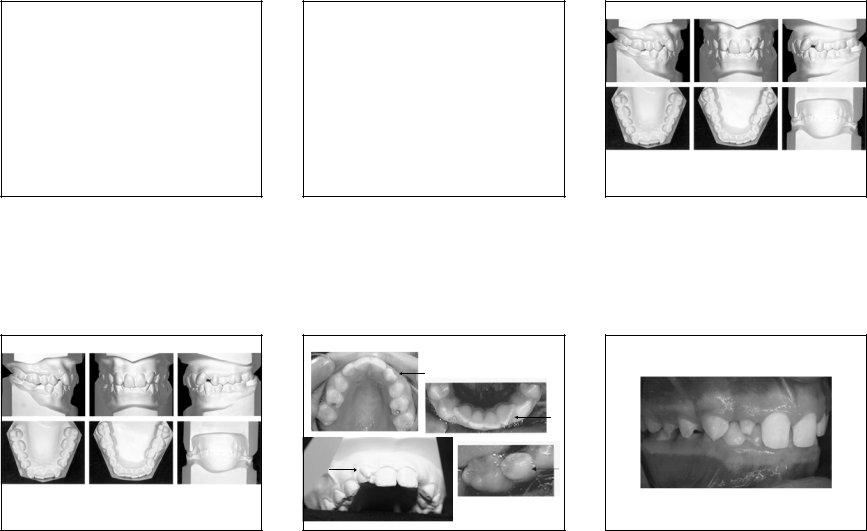
ANALYSIS OF THE DENTITION & OCCLUSION
By
Debora Priestap, Michelle J. Thornberg, Michael L. Riolo
From
Riolo, M. and Avery, J. Eds., Essentials for Orthodontic Practice, EFOP Press of EFOP, LLC. Ann Arbor and Grand Haven, Michigan, U.S.A., 2003.
CHAPTER 13
Pages
DENTAL CASTS
TEETH
DIAGNOSIS & TREATMENT PLANNING
ANALYSIS OF THE DENTITION & OCCLUSION
TEETH SHAPE / SIZE
DENTAL CASTS
|
|
|
||
DENTAL ARCH |
|
|||
|
||||
|
|
|||
TEETH |
|
OCCLUSION |
||
|
|
|||
PALATAL VAULT |
|
|
||
|
|
|
||
|
|
|
||
|
|
|
|
PEG LIKE LATERAL INCISOR
1
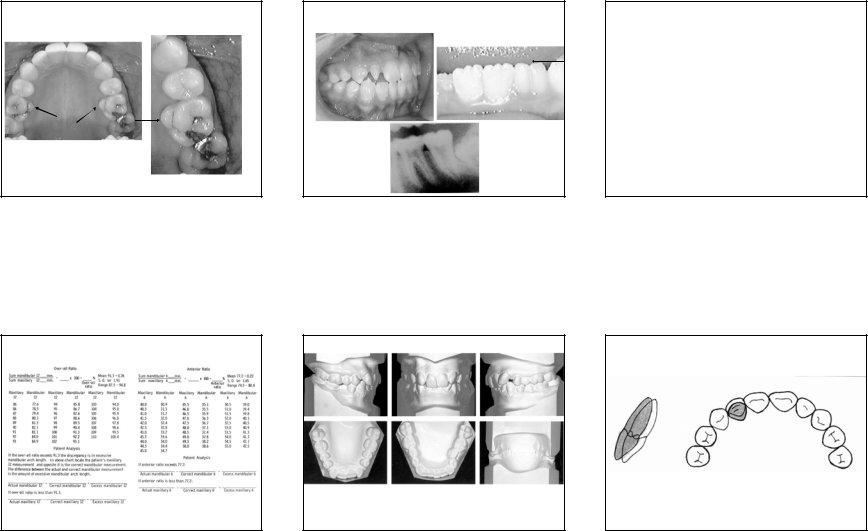
CUSP OF CARABELLI
BOLTON TOOTH RATIO ANALYSIS
FACTORS AFFECTING OCCLUSION
fusion
peg lateral
taurodontia
DENTAL CASTS
BALANCE
BETWEEN THE MESIODISTAL DIAMETER
( SIZE )
OF MAXILLARY & MANDIBULAR TEETH
TOOTH POSITION
TEETH
First
2
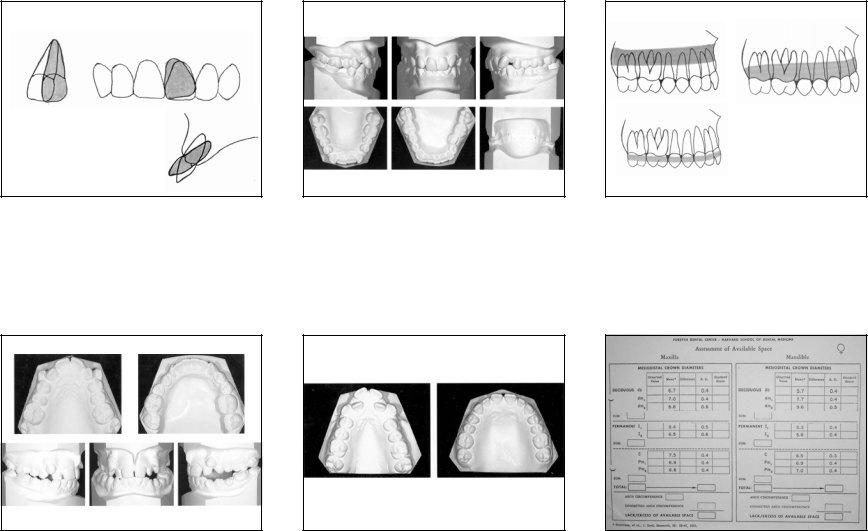
TOOTH INCLINATION
Second
third
APICAL BASE SIZES VERSUS DENTAL ARCH SIZES
CROWDING CONSTRICTED MAXILLARY ARCH BROAD MANDIBULAR ARCH
DENTO ALVEOLAR RELATIONSHIPS
DIFFERENCES BETWEEN BASAL ARCHES AND DENTAL ARCHES
CROWDINGSPACING
Apical base arch |
Alveolar arch |
Dental arch
3
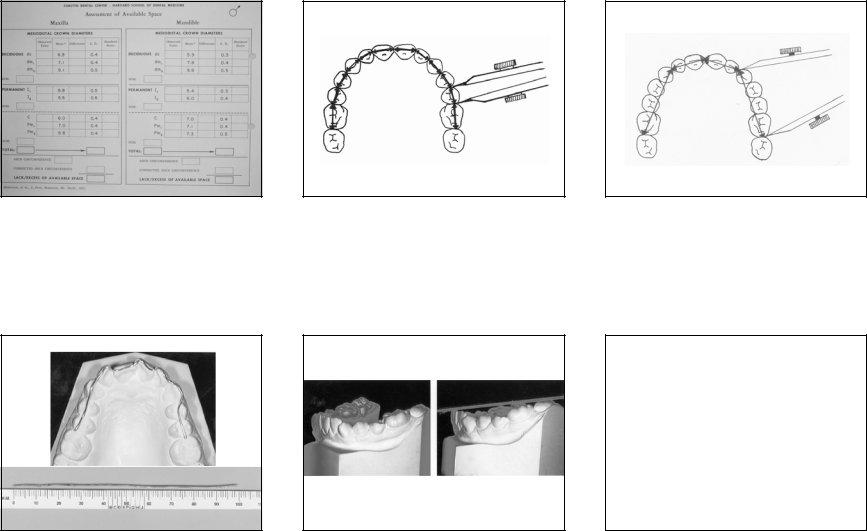
ARCH CIRCUFERENCE
TOOTH SIZE
CURVE OF SPEE
ARCH PERIMETER
MIXED DENTITION ANALYSIS
4
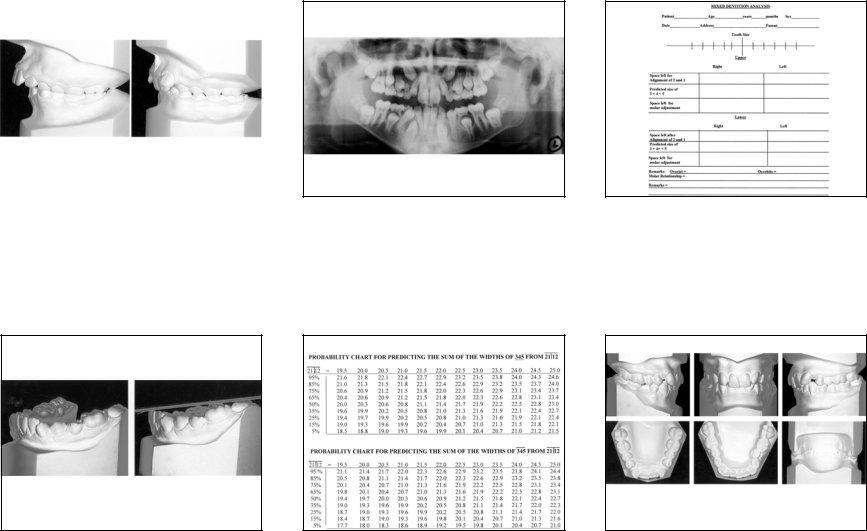
mixed dentition |
mixed dentition |
|
|
CURVE OF SPEE
MIXED DENTITION ANALYSIS
PANORAMIC RADIOGRAPHIC IMAGE
MOYERS MIXED DENTITION ANALYSIS
DENTAL CASTS
DENTAL ARCH
5
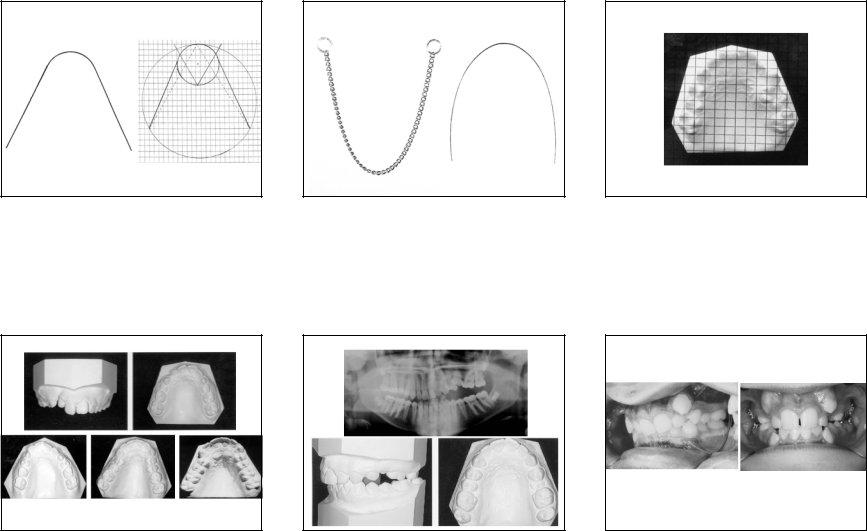
ASYMMETRY
Catenary Curve |
Brader Arch Form |
Asymmetry (ankylosis)
SYMMETOGRAPH
Asymmetry (ectopic eruption)
6

ASYMMETRY (SPACE LOSS)
Interproximal caries
DENTAL CASTS
ASYMMETRY
(SPACE LOSS)
Early extraction of deciduous teeth
CLASS I (Angle)
sagittal plane
ASYMMETRY
Midline discrepancy
congenittally missing teeth
Class II division 1 (Angle) |
Class II division 2 (Angle) |
sagittal
mixed dentition |
mixed dentition |
7
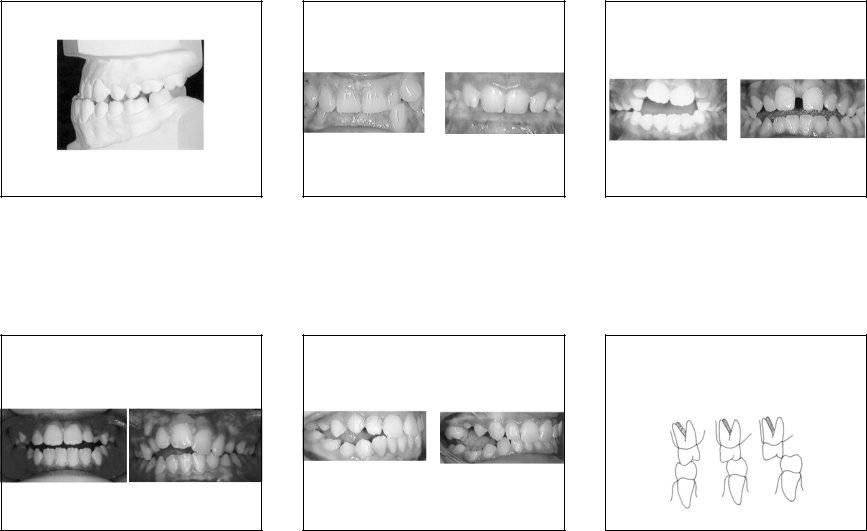
Class III (Angle)
sagittal
permanent dentition
VERTICAL PLANE
open bite malocclusion
midline deviation |
asymmetric open bite |
habit ?
VERTICAL PLANE
DEEP OVERBITE
VERTICAL MALOCCLUSION
POSTERIOR OPEN BITE
VERTICAL PLANE
ANTERIOR OPEN BITE
TRANSVERSE RELATIONSHIP
cross bite
8
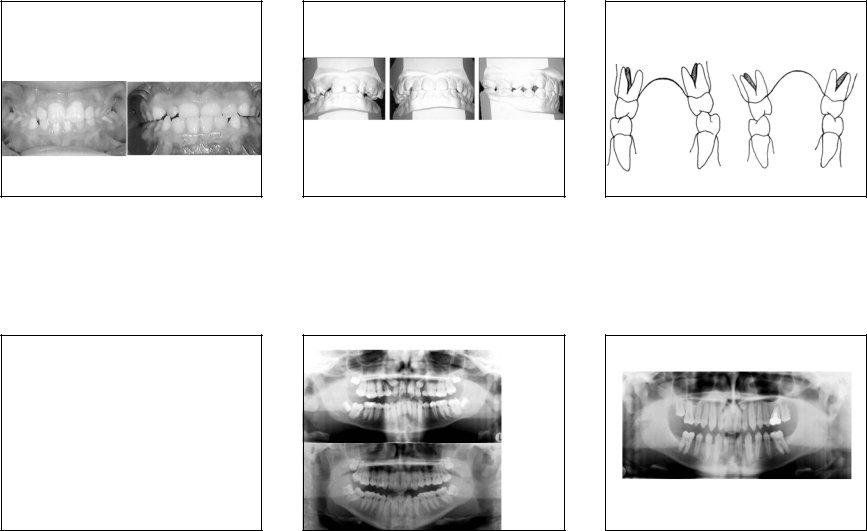
TRANSVERSE RELATIONSHIP
posterior bilateral cross bite |
anterior cross bite |
MORE FACTORS AFFECTING OCCLUSION
TRANSVERSE RELATIONSHIP
FUNCTIONAL SHIFT
TEETH POSITION & INCLINATION
impacted maxillary canines
impacted third molars
TRANSVERSE RELATIONSHIP
large mandibular arch |
narrow maxillary arch |
CROSS BITE
TEETH SIZE / MORPHOLOGY
small teeth
9
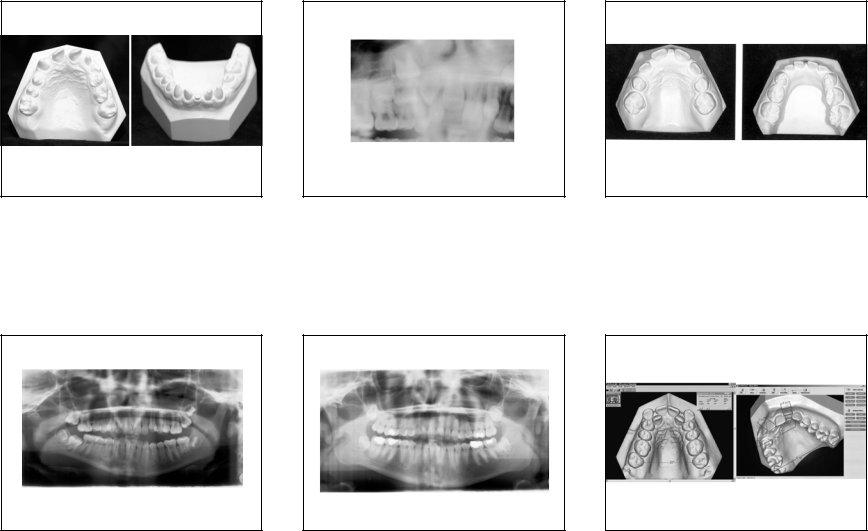
FACTORS AFFECTING OCCLUSION
agenesis
ASYMMETRY
condyle morphology affecting one side
FACTORS AFFECTING OCCLUSION
supernumerary teeth crowding
ASYMMETRY
hyperplasia of mandible affecting one side
MIXED DENTITION
CROWDING
Factors affecting occlusion
Premature loss of deciduous teeth
DIGITAL MODELS
10
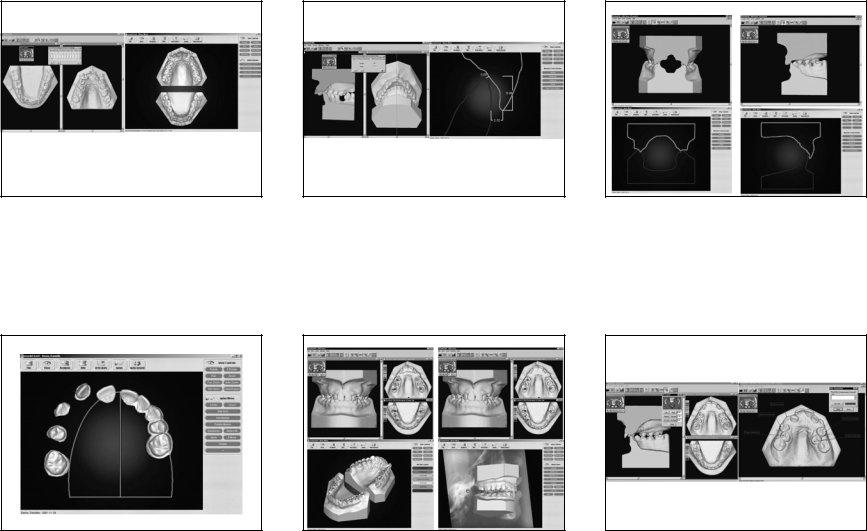
DIGITAL MODELS
DIGITAL MODELS
DIGITAL MODELS
DIGITAL MODELS
DIGITAL MODELS
DIGITAL MODELS
11
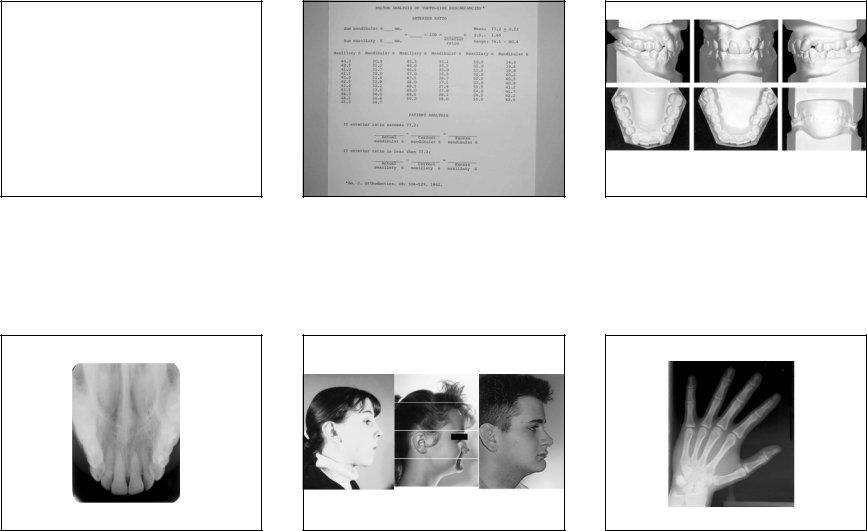
THANK YOU
Figure
Figure |
Figure |
DENTAL CASTS
|
|
|
||||
|
|
|
||||
TEETH |
DENTAL ARCH |
OCCLUSION |
||||
|
|
|
||||
|
|
|
||||
|
|
|
|
|
||
|
|
PALATAL VAULT |
|
|
||
|
|
|
|
|
Figure
12

Figure
Figure
FACTORS AFFECTING OCCLUSION
fusion
peg lateral
taurodontia
VERTICAL MAXILLARY EXCESS
“gummy smile”
short teeth ?
upper thin lip
13